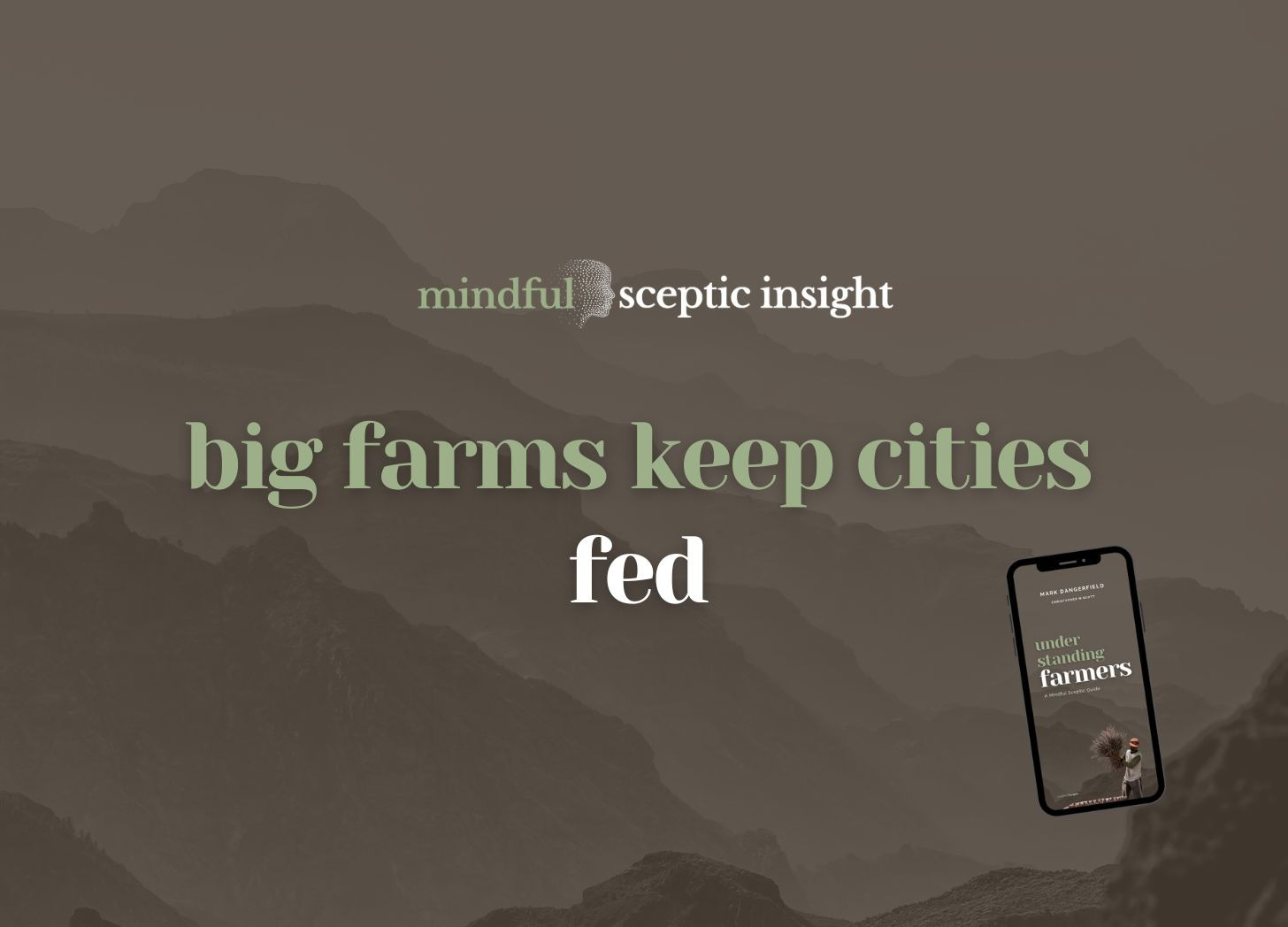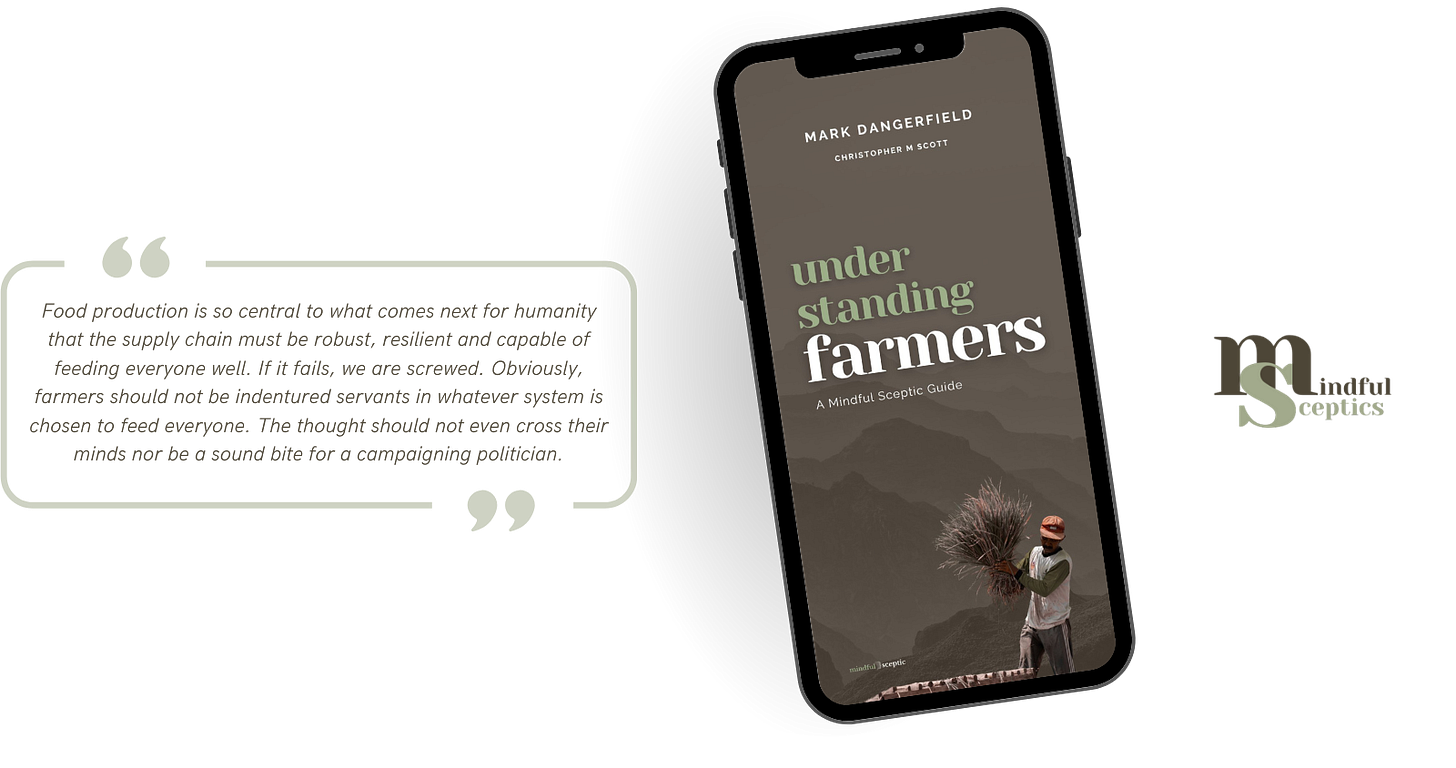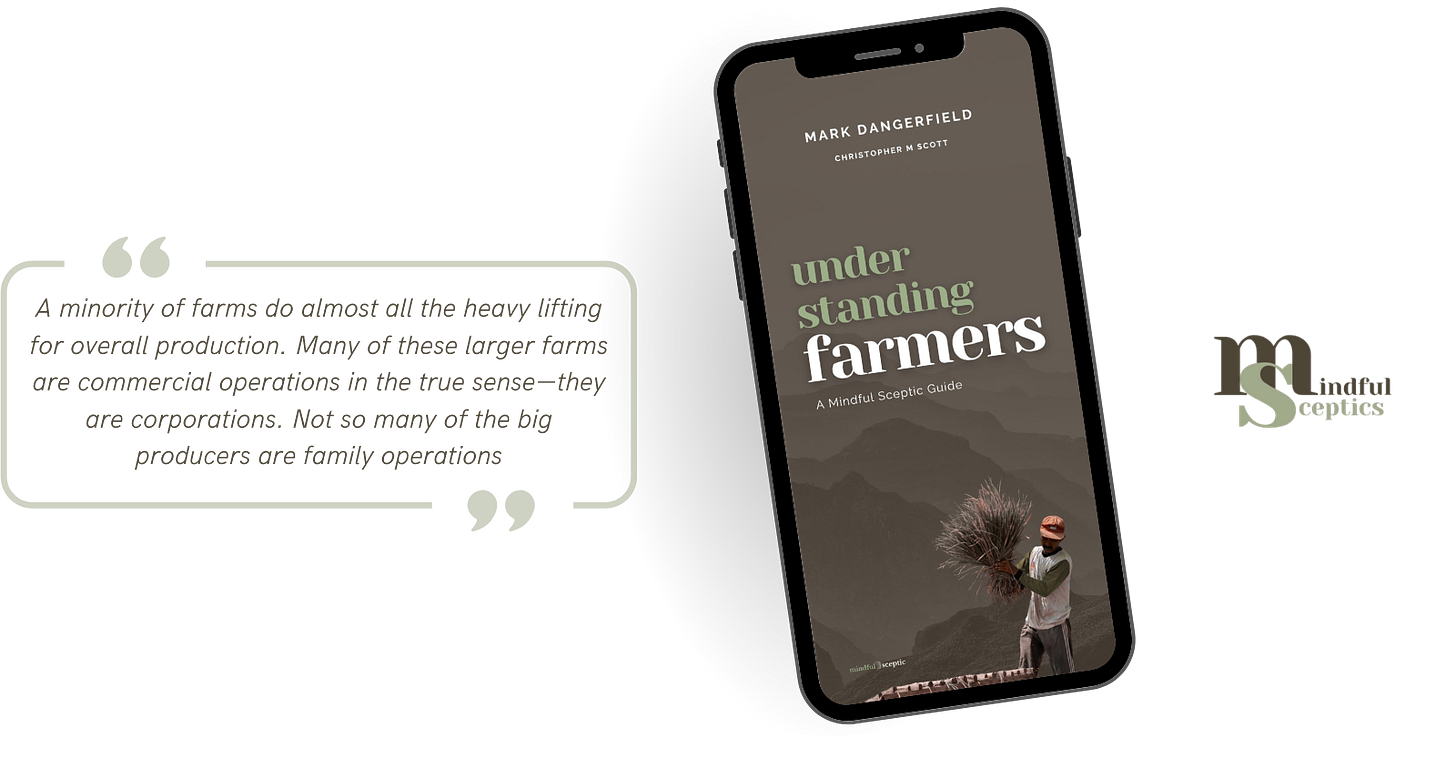Core Idea
Walk through any farmers’ market, and the romance hits you immediately. Heritage tomatoes glistening with morning dew. Artisan cheeses aged in caves you’ll never see. Farmers with weathered hands selling produce they know by name.
It’s all very appealing through the connection to the land, the human scale, and the story behind every carrot.
This is where we tell ourselves that small farms are the answer. It is where we find true local food systems built on a foundation of regenerative, organic agriculture. The family farm is humanity’s salvation.
The narrative is seductive because it promises both ecological redemption and moral clarity. Small is beautiful, and beautiful must be better.
But food security operates on a different mathematics entirely.
Counterpoint
The 80/20 rule that dare not speak its name.
Here’s the uncomfortable truth hiding behind the farmers market romance… small farmers produce romantically, but large operations feed people.
In Australia, a third of broadacre farms generate less than $50,000 annually and account for just 4% of national agricultural production. Meanwhile, the top third of producers that are mostly larger, commercial operations account for 80% of the nation’s food output.
The arithmetic is brutal but inescapable.
You can have 570 million small farms worldwide, most working less than 2 hectares, but they’re feeding themselves and their immediate communities, not the 4 billion urban dwellers who depend on global supply chains.
When push comes to shove—and it will—those intensive production systems powered by fossil fuels are what keep supermarket shelves stocked.
The mindful sceptic sees this paradox clearly.
Small farms matter for cultural reasons, for soil health, for rural communities. But they don’t scale to the challenge of feeding everyone well.
Remove the romance, and you’re left with a stark choice to support the systems that actually produce food at scale, or accept that billions go hungry while we feel good about heritage tomatoes.
Thought Challenge
Do the numbers… Look up the population of your city and the surrounding region. Determine the number of small local farms needed to feed your area if global supply chains were to disappear tomorrow. Compare this to the actual number of farms within, say, 200 kilometres. What gap do you find?
Map your dinner… For your next meal, trace each ingredient back to its source. How many came from small local farms versus large-scale operations? What would happen to the cost and availability of this meal if it all had to come from small farms within 50 kilometres of your home?
Closing Reflection
It is tempting to see a choice between small farms and food security and to find a tragedy. But the real tragedy is that we pretend we don’t have to choose at all.
Being a mindful sceptic means facing the mathematics without flinching, even when it complicates our preferred stories about how the world should work.
Small farms are not ecosystems. And romantic production is not the same as a reliable food supply.
Evidence Support
Lowder, S. K., Skoet, J., & Raney, T. (2016). The number, size, and distribution of farms, smallholder farms, and family farms worldwide. World Development, 87, 16–29.
TL;DR… while more than 80% of the world’s farms are smallholdings (under 2 hectares), these account for a minority of the world’s agricultural land and food output. Large farms, despite being few in number, dominate global production in terms of calories and market value.
Relevance to insight… fundamental reference for farm distribution and output, providing direct evidence that challenges the persistent narrative that small farms “feed the world.” It shows that the lion’s share of marketable food—especially in the global supply chain—comes from large, often corporate or highly commercialised farms.
Ricciardi, V., Ramankutty, N., Mehrabi, Z., Jarvis, L., & Chookolingo, B. (2018). How much of the world’s food do smallholders produce? Global Food Security, 17, 64–72.
TL;DR… revise the widespread claim that smallholders produce 70–80% of the world’s food. They find that small farms generate roughly 30–34% of food calories and even less in terms of commercial output, with larger farms responsible for the majority of global staple production.
Relevance to insight… counters the “romanticised” narrative about smallholders dominating global food supply. Its robust, updated figures provide critical input to any honest, evidence-driven policy or contrarian discussion about food security and farming scale.
Herrero, M., Thornton, P.K., Power, B., Bogard, J.R., Remans, R., Fritz, S., ... & Havlík, P. (2017). Farming and the geography of nutrient production for human use: a transdisciplinary analysis. The Lancet Planetary Health, 1(1), e33–e42.
TL;DR… maps nutrient outputs by farm type and size, concluding that large-scale commercial operations are essential for the supply of key macronutrients and that their spatial distribution is tightly coupled to global urban food security.
Relevance to insight… evidence that, even though small diversified farms contribute to local nutrition and diversity, large-scale farms undergird the population-level provisioning of staple calories and nutrients, which is critical in urbanised societies.
Stevenson, J. R., Villoria, N., Byerlee, D., Kelley, T., & Maredia, M. (2013). Green Revolution research saved an estimated 18 to 27 million hectares from being brought into agricultural production. Proceedings of the National Academy of Sciences, 110(21), 8363–8368.
TL;DR… productivity gains were concentrated on relatively large, commercially oriented farms using input-intensive methods, which enabled dramatically increased output without expansive land conversion.
Relevance to insight… historical and ongoing importance of scale, capital, and systematisation in meeting food security goals—echoing the contrarian view that the romantic focus on peasant farming misreads the empirical contributions to actual global food supply.
van Vliet, J. A., Schut, A. G., Reidsma, P., Descheemaeker, K., Slingerland, M., van de Ven, G. W., & Giller, K. E. (2015). De-mystifying family farming: Features, diversity and trends across the globe. Global Food Security, 5, 11-18.
TL;DR… while family-managed small farms are vital for livelihoods and diversity, the efficiency, consistency, and sheer volume of food provisioning increasingly comes from large-scale and mixed commercial operations.
Relevance to insight… central to challenging both purist agribusiness apologetics and the locavore “small is beautiful” fallacy, offering a balanced perspective rooted in the plural reality of global agriculture—and underscoring the real structural underpinnings of food provision.






